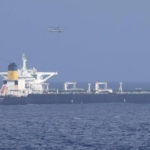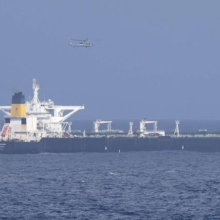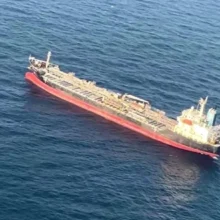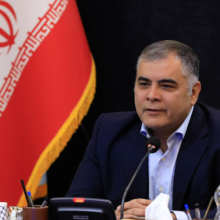Iran’s oil exports and tensions with the West

RoydadNaft – Iran, the third largest producer in the Organization of the Petroleum Exporting Countries (OPEC), produces about 3 million barrels of oil per day (bpd), or around 3% of total world output.
Following are some facts on Iran’s oil industry as anxiety mounts its supply could be disrupted and cause a surge in international oil prices because of extreme tension in the Middle East.
SANCTIONS AND OPEC
Iran’s oil production has been the target of successive waves of sanctions.
The United States has sought to limit Iran’s oil exports since President Donald Trump exited a 2015 nuclear accord between Western powers and Iran in 2018 and re-imposed sanctions aimed at curbing Iran’s revenue.
During Trump’s term, Iran’s oil exports slowed to a trickle.
They have risen during President Joe Biden’s tenure as analysts say sanctions have been less rigorously enforced, Iran has succeeded in evading them, and as China has become a major buyer, according to industry trackers.
Although a member of OPEC and OPEC+ – which brings together OPEC and allies, including Russia – Iran, because of the sanctions imposed on it, is exempt from the group’s output restrictions that are designed to support the oil market.
RISING OUTPUT
Driven by strong Chinese demand last year and continuing into 2024, Iran’s crude exports in March averaged 1.61 million bpd according to industry analysts Kpler, the highest since May 2023 when they were 1.68 million bpd, the highest since 2018.
NUCLEAR DEAL AND ITS IMPACT
The peaks of 2018 reflected the easing of sanctions that followed the 2015 nuclear deal with Iran.
Iranian crude and condensate exports reached 2.8 million bpd in May 2018, the highest since at least 2013 according to industry analysts Kpler.
In May 2018, the crude oil portion of Iran’s exports was 2.51 million bpd, Kpler found. According to OPEC data, that was the most since 2011 when Iran exported 2.54 million bpd on average.
Iran’s oil production reached all-time highs in the 1970s with a peak of 6.02 million bpd in 1974, according to OPEC data. That amounted to over 10% of world output at the time.
TRUMP AND BIDEN
Also in May 2018, the United States under Trump’s presidency unilaterally withdrew from the 2015 deal and re-imposed sanctions, aiming to cut Iran’s oil sales to zero.
Iran stopped providing data on its oil exports, but assessments based on tanker tracking show they fell sharply in the next two years to below 200,000 bpd in some months of 2020, the lowest since at least 1980 according to OPEC data.
In late 2020 Joe Biden won the U.S. presidential election.
In January-March 2021, China increased its imports of Iranian oil to almost 800,000 bpd in January and almost 1 million bpd in March, although imports dropped again in April of that year.
In 2021, Iran and the United States began indirect talks meant to bring both countries back into full compliance with the 2015 nuclear deal. Iranian exports rose during 2022, ending the year above 1 million bpd.
Analysts have said the higher exports appear to be partly a result of Iran’s success in evading U.S. sanctions.
Iran has for years evaded sanctions through ship-to-ship transfers and “spoofing” – or manipulating GPS transponders so that ships show up in different positions – and the country is getting better at such tactics, analysts have said.
Analysts have also said the rise in exports appears to be the result of U.S. discretion in enforcing the sanctions.
A State Department spokesman said the Biden administration had not lifted any sanctions on Iran and continued to increase pressure on the Islamic Republic, Reuters reported on Tuesday.













